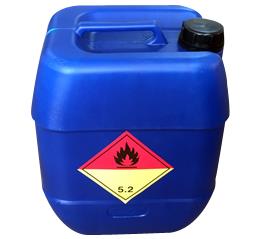Email: info@sino-richem.com
Mobile: +86-13953606880
Qingdao Richem New Materials Co.,Ltd
Address: 1-1706 No.1389 Zhujiang Road, Huangdao District., Qingdao, China
Weifang Richem International Ltd
Address: B415 Diamond Plaza, No.227 East Dongfeng Str., Weifang, Shandong, China
Glycidyl Methacrylate Gma for Rubber Basic Info
Model NO.: CAS No 106-91-2
Appearance: Liquid
Colour: Colorless
Melting Point: -82°c
Organic Peroxides Color: ≤15
Transport Package: 200kg/Drum
Origin: China
Type: Pharmaceutical Intermediates
Quality: Industrial
Organic Peroxides Boiling Point,: 189°c
Water: ≤0.05%
Specification: 99%
HS Code: 29161400
Glycidyl Methacrylate Gma for Rubber Product Description
Technical Data Sheet
Glycidyl methacrylate (GMA)
Organic Peroxides Typical Properties
Product name: Glycidyl methacrylate
Alternative name: GMA; Methacrylic Acid Glycidyl Ester; Glycidyl Methacrylate;
2-((Methacryloxy)methyl)oxirane; 2,3-epoxypropyl methacrylate
CAS: 106-91-2
Molecular formula: C7H10O3
Molecular Weight: 142.15
Appearance: Clear Liquid, fruit smell??
Boiling Point, oC: 189°C
Melting Point oC: -82°C
Solubility: 2.3% by weight in water. Completely miscible with common organic solvents.
Flash Point, PMCC oC (oF)85 (185)
Class: 8(6.1) UN2922 III
Specs:
| Assay, % | ≥99.0% |
| Water, % | ≤0.05% |
| Cl, ppm | ≤10ppm |
| Color | ≤15 |
| MQ, ppm | ≤50ppm |
| Epichlorohydrin, % | ≤0.1% |
Glycidyl Methacrylate Gma for Rubber Functionality
Glycidyl Methacrylate (GMA) monomer contains both acrylic and epoxy groups, providing you with the design and performance versatility required for the most demanding coating and resin applications.
Acrylic and Vinyl Functionality
Allows copolymerization with a variety of other vinyl monomers in aqueous and nonaqueous systems.
Resulting polymers feature a unique combination of epoxy functionality with an acrylic backbone.
Wide co-monomer selection provides easy control of physical and chemical properties such as Tg and solution viscosity.
Epoxy Functionality
Enables crosslinking reactions with amines, carboxylic acids, anhydrides and hydroxyl-containing polymers. Proper accelerator/catalyst choice allows use of a wide range of cure temperatures and schedules.
Allows structural modification of the polymer backbone that can result in differentiated properties and higher performance.
Recommed Application:
High performance automotive coatings for automotive applications
Powder Coatings
Radiation-curable coatings
Waterborne coatings
Industrial and protective coatings
Appliance and hardware finishes
Adhesives
Electrical laminates
Multifunctional acrylates
Hydrogenated LER substitutes
Plastic modifiers (PVC, PET, engineering thermoplastics, rubber)
Handling and storage recommendations, packing
Handling and storage: Store at 4 deg. C.??
Glycidyl methacrylate is stable under recommended storage conditions. Elevated temperatures can cause hazardous polymerization. Polymerization can be catalyzed by the absence of air, the presence of free radical initiators and peroxides, acids, UV light, bases, or high temperature.
Glycidyl methacrylate contains an inhibitor to minimize polymerization under recommended storage conditions. See Product Description or SDS. Maintain inhibitor concentration and dissolved oxygen level. Uninhibited monomer vapors can polymerize and plug relief devices.
Avoid unintended contact with activated carbon or silica gel, which may cause polymerization. Avoid contact with cellulose- or clay-based absorbents, and with incompatible materials, such as:
. Oxidizing or reducing materials
. Strong acids
. Strong bases
. Metals (cast iron, mild steel, copper, brass) and metal oxides
Organic Peroxides Packing: IBC or 200kg steel drum
